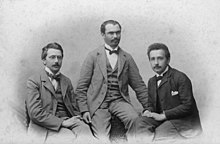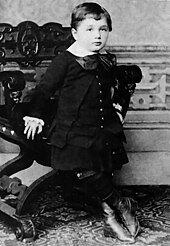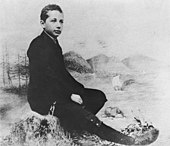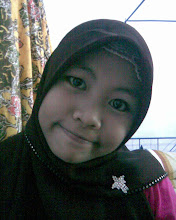Albert Einstein (14 March 1879 – 18 April 1955) was a German-born theoretical physicist who developed the theory of general relativity, effecting a revolution in physics. For this achievement, Einstein is often regarded as the father of modern physics and one of the most prolific intellects in human history. He received the 1921 Nobel Prize in Physics "for his services to theoretical physics, and especially for his discovery of the law of the photoelectric effect". The latter was pivotal in establishing quantum theory within physics.
Near the beginning of his career, Einstein thought that Newtonian mechanics was no longer enough to reconcile the laws of classical mechanics with the laws of the electromagnetic field. This led to the development of his special theory of relativity. He realized, however, that the principle of relativity could also be extended to gravitational fields, and with his subsequent theory of gravitation in 1916, he published a paper on the general theory of relativity. He continued to deal with problems of statistical mechanics and quantum theory, which led to his explanations of particle theory and the motion of molecules. He also investigated the thermal properties of light which laid the foundation of the photon theory of light. In 1917, Einstein applied the general theory of relativity to model the structure of the universe as a whole.
He was visiting the United States when Adolf Hitler came to power in 1933, and did not go back to Germany, where he had been a professor at the Berlin Academy of Sciences. He settled in the U.S., becoming a citizen in 1940. On the eve of World War II, he helped alert President Franklin D. Roosevelt that Germany might be developing an atomic weapon, and recommended that the U.S. begin similar research; this eventually led to what would become the Manhattan Project. Einstein was in support of defending the Allied forces, but largely denounced using the new discovery of nuclear fission as a weapon. Later, together with Bertrand Russell, Einstein signed the Russell–Einstein Manifesto, which highlighted the danger of nuclear weapons. Einstein was affiliated with the Institute for Advanced Study in Princeton, New Jersey, until his death in 1955.
Einstein published more than 300 scientific papers along with over 150 non-scientific works. His great intelligence and originality have made the word "Einstein" synonymous with genius.
Early life and education
Albert Einstein was born in Ulm, in the Kingdom of Württemberg in the German Empire on 14 March 1879.[8] His father was Hermann Einstein, a salesman and engineer. His mother was Pauline Einstein (née Koch). In 1880, the family moved to Munich, where his father and his uncle founded Elektrotechnische Fabrik J. Einstein & Cie, a company that manufactured electrical equipment based on direct current.
The Einsteins were non-observant Jews. Albert attended a Catholic elementary school from the age of five for three years. Later, at the age of eight, Einstein was transferred to the Luitpold Gymnasium where he received advanced primary and secondary school education until he left Germany seven years later. Although it has been thought that Einstein had early speech difficulties, this is disputed by the Albert Einstein Archives, and he excelled at the first school that he attended.
His father once showed him a pocket compass; Einstein realized that there must be something causing the needle to move, despite the apparent "empty space". As he grew, Einstein built models and mechanical devices for fun and began to show a talent for mathematics. When Einstein was ten years old Max Talmud (later changed to Max Talmey), a poor Jewish medical student from Poland, was introduced to the Einstein family by his brother, and during weekly visits over the next five years he gave the boy popular books on science, mathematical texts and philosophical writings. These included Immanuel Kant's Critique of Pure Reason and Euclid's Elements (which Einstein called the "holy little geometry book").[12][13][fn 1]
In 1894, his father's company failed: direct current (DC) lost the War of Currents to alternating current (AC). In search of business, the Einstein family moved to Italy, first to Milan and then, a few months later, to Pavia. When the family moved to Pavia, Einstein stayed in Munich to finish his studies at the Luitpold Gymnasium. His father intended for him to pursue electrical engineering, but Einstein clashed with authorities and resented the school's regimen and teaching method. He later wrote that the spirit of learning and creative thought were lost in strict rote learning. In the spring of 1895, he withdrew to join his family in Pavia, convincing the school to let him go by using a doctor's note.During this time, Einstein wrote his first scientific work, "The Investigation of the State of Aether in Magnetic Fields".
Einstein applied directly to the Eidgenössische Polytechnische Schule (ETH) in Zurich, Switzerland. Lacking the requisite Matura certificate, he took an entrance examination, which he failed, although he got exceptional marks in mathematics and physics. The Einsteins sent Albert to Aarau, in northern Switzerland to finish secondary school.While lodging with the family of Professor Jost Winteler, he fell in love with Winteler's daughter, Marie. (His sister Maja later married the Wintelers' son, Paul.) In Aarau, Einstein studied Maxwell's electromagnetic theory. At age 17, he graduated, and, with his father's approval, renounced his citizenship in the German Kingdom of Württemberg to avoid military service, and in 1896 he enrolled in the four year mathematics and physics teaching diploma program at the Polytechnic in Zurich. Marie Winteler moved to Olsberg, Switzerland for a teaching post.
Einstein's future wife, Mileva Marić, also enrolled at the Polytechnic that same year, the only woman among the six students in the mathematics and physics section of the teaching diploma course. Over the next few years, Einstein and Marić's friendship developed into romance, and they read books together on extra-curricular physics in which Einstein was taking an increasing interest. In 1900 Einstein was awarded the Zurich Polytechnic teaching diploma, but Marić failed the examination with a poor grade in the mathematics component, theory of functions. There have been claims that Marić collaborated with Einstein on his celebrated 1905 papers, but historians of physics who have studied the issue find no evidence that she made any substantive contributions.
Marriages and children
In early 1902, Einstein and Mileva Marić (Милева Марић) had a daughter they named Lieserl in their correspondence, who was born in Novi Sad where Marić's parents lived. Her full name is not known, and her fate is uncertain after 1903.
Einstein and Marić married in January 1903. In May 1904, the couple's first son, Hans Albert Einstein, was born in Bern, Switzerland. Their second son, Eduard, was born in Zurich in July 1910. In 1914, Einstein moved to Berlin, while his wife remained in Zurich with their sons. Marić and Einstein divorced on 14 February 1919, having lived apart for five years.
Einstein married Elsa Löwenthal (née Einstein) on 2 June 1919, after having had a relationship with her since 1912. She was his first cousin maternally and his second cousin paternally. In 1933, they emigrated permanently to the United States. In 1935, Elsa Einstein was diagnosed with heart and kidney problems and died in December 1936.
Patent office

Left to right: Conrad Habicht, Maurice Solovine and Einstein, who founded the Olympia Academy

Einstein's home in Bern
After graduating, Einstein spent almost two frustrating years searching for a teaching post, but a former classmate's father helped him secure a job in Bern, at the Federal Office for Intellectual Property, the patent office, as an assistant examiner. He evaluated patent applications for electromagnetic devices. In 1903, Einstein's position at the Swiss Patent Office became permanent, although he was passed over for promotion until he "fully mastered machine technology".
Much of his work at the patent office related to questions about transmission of electric signals and electrical-mechanical synchronization of time, two technical problems that show up conspicuously in the thought experiments that eventually led Einstein to his radical conclusions about the nature of light and the fundamental connection between space and time.
With a few friends he met in Bern, Einstein started a small discussion group, self-mockingly named "The Olympia Academy", which met regularly to discuss science and philosophy. Their readings included the works of Henri Poincaré, Ernst Mach, and David Hume, which influenced his scientific and philosophical outlook.Academic career
In 1901, Einstein had a paper on the capillary forces of a straw published in the prestigious Annalen der Physik. On 30 April 1905, he completed his thesis, with Alfred Kleiner, Professor of Experimental Physics, serving as pro-forma advisor. Einstein was awarded a PhD by the University of Zurich. His dissertation was entitled "A New Determination of Molecular Dimensions". That same year, which has been called Einstein's annus mirabilis or "miracle year", he published four groundbreaking papers, on the photoelectric effect, Brownian motion, special relativity, and the equivalence of matter and energy, which were to bring him to the notice of the academic world.
By 1908, he was recognized as a leading scientist, and he was appointed lecturer at the University of Bern. The following year, he quit the patent office and the lectureship to take the position of physics docent at the University of Zurich. He became a full professor at Karl-Ferdinand University in Prague in 1911. In 1914, he returned to Germany after being appointed director of the Kaiser Wilhelm Institute for Physics (1914–1932) and a professor at the Humboldt University of Berlin, with a special clause in his contract that freed him from most teaching obligations. He became a member of the Prussian Academy of Sciences. In 1916, Einstein was appointed president of the German Physical Society (1916–1918).
In 1911, he had calculated that, based on his new theory of general relativity, light from another star would be bent by the Sun's gravity. That prediction was claimed confirmed by observations made by a British expedition led by Sir Arthur Eddington during the solar eclipse of 29 May 1919. International media reports of this made Einstein world famous. On 7 November 1919, the leading British newspaper The Times printed a banner headline that read: "Revolution in Science – New Theory of the Universe – Newtonian Ideas Overthrown".(Much later, questions were raised whether the measurements had been accurate enough to support Einstein's theory.)
In 1921, Einstein was awarded the Nobel Prize in Physics. Because relativity was still considered somewhat controversial, it was officially bestowed for his explanation of the photoelectric effect. He also received the Copley Medal from the Royal Society in 1925.







0 komentar:
Posting Komentar